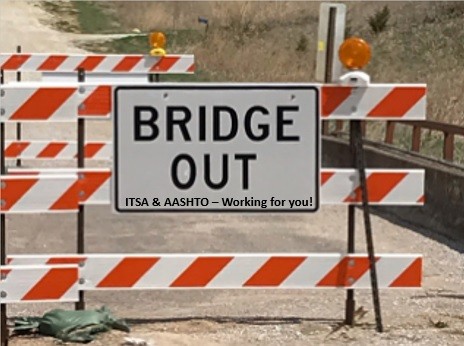
The Infrastructure Investment and Jobs Act (IIJA) passed last year in the U.S. earmarks billions of dollars that can be used for the deployment of potentially life-saving C-V2X car connectivity technology. The U.S. Department of Transportation and state DOTs are poised to commence that spending, but one thing stands in the way of car maker or state DOT willingness to proceed – a lawsuit by the Intelligent Transportation Systems of America (ITSA) and the American Association of State Highway Transportation Officials (AASHTO).
ITSA and AASHTO are seeking to reverse the Federal Communication Commission’s (FCC) re-allocation of 45MHz of spectrum in the 5.9GHz band – previously preserved for dedicated short range communication (DSRC) use by automobiles – for unlicensed Wi-Fi use. ITSA and AASHTO want the 45MHz restored.
The judge is unlikely and probably does not have the authority to reverse the FCC’s unanimous decision. The only possible path to success for the ITSA and AASHTO would be for the judge to find the FCC’s decision-making process somehow flawed. This is highly unlikely – which means that the legal action is a waste of time and money and maybe…lives.
Ironically, ITSA and AASHTO wave the bloody flag in their efforts to preserve the prior spectrum allocation – claiming their efforts are intended to save lives the best way possible with connected car technology. Their efforts are actually further delaying the prospect of the adoption of connected car technology in the near term.
ITSA CEO Laura Chase comments in an opinion piece in the latest ITSA magazine:
“While there is no magic bullet to reduce crashes and fatalities, we have a responsibility to use all the tools at our disposal to save lives. The best tool we currently have is connected vehicle technologies – but without wide-scale deployment, we can’t hope to move the needle on reducing traffic fatalities.”
Well, Laura, we can’t move that needle as long as ITSA and AASHTO continue to inject uncertainty into the regulatory process. Car makers need clarify, alignment, and commitment. State and Federal contracting authorities, too, need clarity. ITSA and AASHTO have muddied the waters and put a bullet in the head of potentially life-saving infrastructure projects incorporating C-V2X technology.
Even stranger, Chase says the ITSA is simultaneously working on re-imbursement for stranded DSRC deployments – something that is already provided for in the IIJA. The only good news from ITSA is that the organization appears to be “accepting” the FCC’s overt endorsement of cellular-based C-V2X technology over DSRC. Thank goodness for small things.
The legal action by ITSA and AASHTO means that car companies or state DOTs are frozen. Proposals can’t be written and money cannot be allocated until the case is resolved.
Multiple car companies and DOTs have applied for waivers from the FCC to proceed with their projects – but the FCC has not even posted the waiver requests, which are subject to public comment. ITSA and AASHTO have gummed up the very process for which they have worked for more than 20 years – to bring V2X technology to the market.
A senior General Motors executive speaking as part of a 5.9GHz forum at the recent ITSA event in Charlotte, N.C., said, of this legal action: “You lost half of the dedicated 5.9GHz spectrum because you did nothing with it for 20 years. If you don’t do something with it now you’re likely to lose the rest of it.”
Worse, though, is the reality that the legal action by ITSA and AASHTO is actually costing the U.S. valuable time in the race to compete with China. China long ago abandoned DSRC as the primary connected car technology in favor of C-V2X.
As many as 13 auto makers in China have either already introduced C-V2X-equipped vehicles or have announced plans to do so. In the U.S., Ford Motor Company, Audi of America, and Jaguar Land Rover and multiple state DOTs have submitted waiver requests to introduce the technology – and, so, they wait.
ITSA and AASHTO are on the wrong side of history. These organizations are wasting time, money, and lives in the interest of turning back the clock. The FCC has spoken. The spectrum has been allocated. The billions of dollars have been approved. It’s time for ITSA and AASHTO to simply get out of the way.
Also read:
OnStar: Getting Connectivity Wrong
Tesla: Canary in the Coal Mine
ISO 26262: Feeling Safe in Your Self-Driving Car
Share this post via:







Quantum Computing Technologies and Challenges